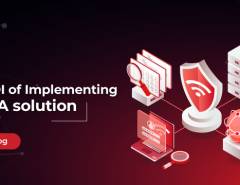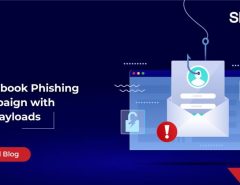You might be sitting relaxed in your office thinking that cyber threats are for others. My IT department is sufficient to take care of the security of my data and systems. Or probably, we aren’t that big or popular that someone will hack into our systems. Or even worse, we are so big that we have a few people taking care of data security reporting to my IT guy, they’ll manage. Well, you may need to rethink!
A report published by Hiscox Insurance outlined that the total cost of cyber-attacks is more than 450 Billion USD. The report also stated that over 100 million Americans had their medical records stolen. An international study found that nearly 40% of Enterprises were hit by ransomware in 2015-2016 of which 34% of business victims lost revenue and 20% had to cease operations immediately.
The cyber threat landscape
The ever-present threat to any organization’s information systems cannot be ignored. It is present across industries and organizations of all sizes, small, medium and large. Technology has enabled the business operations to be spread geographically. From simple 2 tier client-server technologies, the landscape has evolved to using software as a service, cloud storage and multiple user platforms (‘With Bring Your Own Device’, there are many handheld devices with almost as many operating systems accessing organizational data and services). The movement of data beyond organizational boundaries has increased and the number of channels through which this information flows has grown exponentially. This level of openness of systems inherently exposes both data and system for cyber attacks.
At the same time, the cyber criminals have evolved. From just ‘hacking sites’ they are now able to conduct network surveillance, launch distributed denial of service (DDoS) attack, phishing attacks and constantly invent new ways that are targeted to steal organizational data and monetize it. The proliferation of portable storage devices also increases the risk of internal loss of data either due to negligence of staff or intentional breach of security. People in security world know very well that users will exploit loopholes in security policies to achieve their directives and performance metrics. These methods eventually lead to threat of loss of data for the organization.
Need for security expert
Considering the complexity of the operating environment and sophistication of the possible attacks, Organizations need dedicated effort to protect themselves from loss of data. There needs to be analysis of the risks, mitigation of these risks, alliances and partnerships with business operation teams and third party specialists. Coordinated, dedicated effort is required to achieve such desired level of information security. Every business operation must be designed with security being an integral part of that design. For this, a separate role of CISO is needed, who is responsible for overall information security of the organization and has sufficient authority to control all aspects of business from security perspective.
The value brought in by Chief Information Security Officer (CISO)
A dedicated CISO will have the in-depth knowledge about the threats that exist, the protective measures, tools and techniques to protect the infrastructure and information. He will be skilled to assess the threats, calculate the impact on business and then communicate the threats in such a language that the other CXOs understand the risks. He will be doing all this proactively – much before the threat becomes a reality (if at all). The job requires not only the technical knowledge and understanding of the security environment but also wide knowledge of the business operations to know where these risks might occur. It is important that CISO has these skills to ensure that management dedicates right budget for cyber security in the organization. Moreover, most of the standards for information security such as ISO 27001, NIST, COBIT require a fully documented information security policy along with a senior position to oversee and manage that policy. These standards can also be leveraged to help organizations describe the role and responsibility of CISO so that he can implement robust cyber security practices.
CISO – It’s about leadership
He not only defines the security policies and procedures, but also drives the security education of the workforce. In doing so the effectiveness of the security measures becomes clear and a more secure infrastructure can be created. The key to the success of the CISO role is not just in designing a robust cybersecurity strategy, but in educating and imbibing the security practices in the organization’s workforce. This gives out an important message that the organization is not only excellent in the services they provide, but is also conscious to protect the customer and partner data.
Seqrite helps businesses simplify IT security and maximize business performance. To know more about our products and services visit our website.




